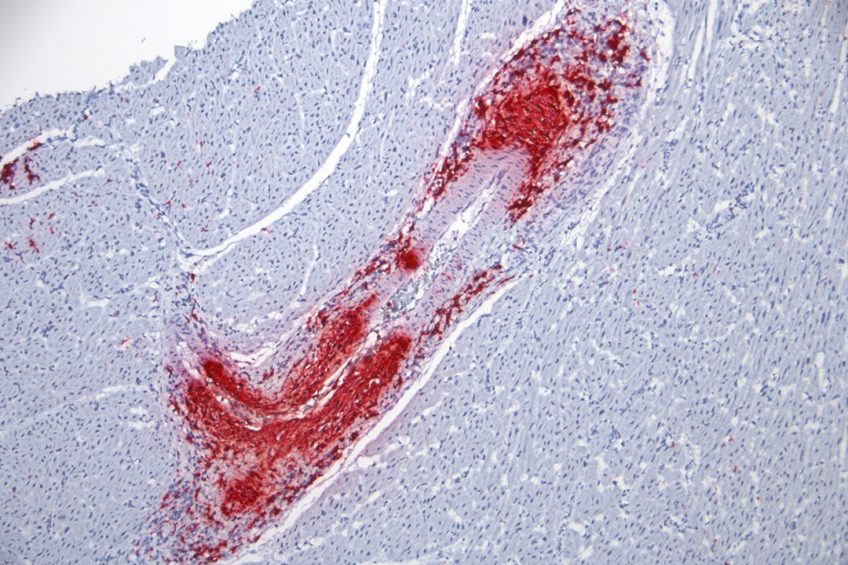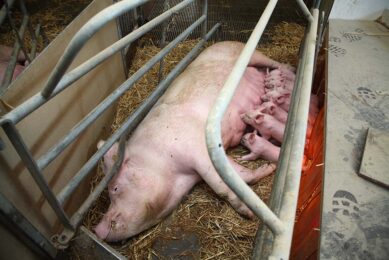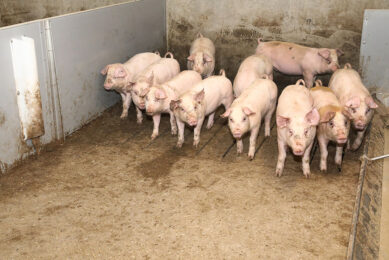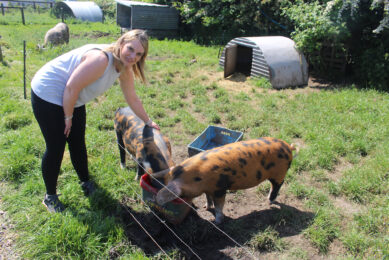Porcine circovirus 3 – is it a virus to worry about?

Porcine circovirus 2 (PCV2) is well-known in the swine industry, but is there reason to worry about its cousin PCV3? At the Spanish research institute CReSA-IRTA a range of studies have been conducted lately. In short: there’s a good reason to keep an eye on it.
At least 5 studies were devoted to PCV3 at the recently held European Symposium of Porcine Health Management (ESPHM), mid-April 2021. At the event, held entirely digitally, the Spanish team of CReSA-IRTA led by Dr Segalés and Dr Sibila presented new insights of this virus, which was discovered and described a few years ago. The team at CReSA-IRTA started working on PCV3 in late 2016, when it participated in a collaboration study with other European groups to the first detection of the virus.
Not much is known about PCV3
Not too much is known about PCV3 and few research groups focus on it. Researcher Dr Marina Sibila commented to Pig Progress, “Overall, we know that this virus is ubiquitous and that it has been associated with several pathologic conditions. Among these conditions, the link between PCV3 and reproductive failures is gaining evidence. However, we do not know, yet, the extent and frequency of this reproductive failures and, in consequence, its economic impact. To our opinion, this virus should be definitely included in the differential diagnosis of reproductive problems observed in the farm. This information will help us to know if the attention paid to this virus is enough.”
Is PCV3 causing pig health problems?
As a link between PCV3 and reproductive failure seems likely, that particular topic received attention in the CReSA-IRTA studies. One of the studies presented at ESPHM was carried out in cooperation with Zoetis, the University of São Paulo and the Universitat Autònoma de Barcelona. It zoomed in on the question to what degree PCV3 could be vertically transmitted from sows to piglets. To that end they assessed the frequency of PCV3 in sera from gilts and sows from farms without reproductive problems, as well as in tissues of their respective stillborn piglets.
In total, sera from 60 primiparous and 64 multiparous sows belonging to 3 different farms without reproductive problems were collected at 2 moments, i.e. around mating and close to farrowing. In addition, the team tested tissues from 264 stillborn piglets from these sows, either from the brain or from the lungs.
All sera from multiparous sows were PCV3 PCR negative, while 19 of the 60 primiparous sows were tested positive for PCV3 at either of the 2 sampling moments, which equals to 31% of the total. From the 264 stillborns, 90 (34%) had at least 1 tissue positive to PCV3.
Primiparous vs multiparous sows
The team wrote: “The rate of detection of the virus in stillborns from primiparous sows (77 out of 98, or 79%) was significantly higher than that from multiparous sows (13 out of 166, or 8%).” In addition, they reported, the percentage of lungs being PCV3 PCR positive was higher (84/258, or 32%), than that of the brain (68/261, 26%).
The researchers concluded, “PCV3 DNA was detected only in sera from primiparous but not from multiparous sows of the studied herds. The prevalence of PCV3 in both tissues was significantly higher in stillborns from primiparous than from multiparous sows. Overall, these results indicated that PCV3 can be vertically transmitted causing intrauterine infections in absence of reproductive problems in the farm.”

PCV3 virus found in lesions of young dead pigs
Having established the infection rate in cases without reproductive problems, the CReSA-IRTA team zoomed in deeper on farms with reproductive failure, in a different study in cooperation with animal health company Hipra. The team investigated 53 cases of foetuses and stillborn piglets from Spanish farms. Apart from PCV3, the team also checked for presence of e.g. PRRSv and PCV2. In 18 out of 53 cases (33.4%), PCV3 was detected. The main labelled cells were smooth muscle cells of arterioles from different tissues such as heart, kidney and spleen; macrophage-like cells in lung and kidney were also labelled. The team found mild arteritis and peri-arteritis in multiple tissues of the positive cases.
Of this trial, the researchers wrote: “Since the simple viral detection of an endemic virus does not imply the causality of the clinical condition, detection of PCV3 within lesions provides a stronger evidence of putative association between the presence of the virus and the clinical outcome.”
Arthrogryposis and pre-weaning nervous disease
Other papers published at ESPHM investigated other potential implications of PCV3 infection. Would there for instance also be a link between the virus and stillborn and pre-weaned pigs with nervous disease? To that end, the CReSA-IRTA team cooperated with the Animal and Plant Health Agency (APHA) in the United Kingdom.
The outcome there was that “detection of high amount of PCV3 in tissues in stillbirths with arthrogryposis and in preweaning piglets with nervous disease and multisystemic inflammation provides good evidence of its likely causal association with disease on 2 breeding herds.” The team added that these cases were believed to be the first such report in Europe.
Does PCV3 occur in pork meat?
In another trial by CReSA-IRTA in combination with Zoetis, it was researched whether DNA for PCV3 was found in both fresh and processed pork products. The answer was yes in both cases – in total in 67% of the cases PCV3 was found, or 20 out of 30 samples. Remarkably, the team found the virus on all fresh pork products: “All non-processed samples (loin and sausages) were positive for PCV3 and contained the highest viral load.” They wrote: “Since the percentage of samples from non-processed meat was higher than processed one, it is likely that curation procedures may exert an effect on PCV3 genome integrity. […] Overall, these data likely reflect the ubiquity of PCV3 in the swine industry.”
Dr Sibila and Dr Segalés added that this detection should not have any public health implications.

PCV3 in other animals than pigs or wild boar?
Last but not least – does the virus also occur outside swine or wild boar, i.e. in wildlife species in Spain? The answer to that question appears “no”. The reason for the research, however, was the fact that PCV3 DNA had been confirmed in Italian wild ruminants and related hematophagous ectoparasites.
To figure out whether in Spain the situation was alike, the CReSA-IRTA team in cooperation with the Polish National Veterinary Institute and the Universitat Autònoma de Barcelona investigated samples from a range of animals, like e.g. hunted red deer, rabbits and hares. They concluded: “The present study indicated that wild ruminants and lagomorphs do not play a significant role in the epidemiology of PCV3 in Spain, suggesting that these infections may be caused by eventual spill-over events.”

Other studies done to pig health at CReSA-IRTa involved a treatment to Glässer’s Disease
Next steps: Pathogenesis of PCV3
All in all, even though the effect and impact of the virus cannot be compared to PCV2, there is some reason for keeping an eye on this virus. Dr Sibila said, “In most of the cases, PCV3 infection will be subclinical (of unknown impact). However, to our opinion, is worthy to include PCV3 in the potential list of viruses causing an increase of the normal rate of stillborn and mummified foetuses and/or potential cause of pre- and post-weaning disorders.”
The team will continue to investigate the virus. Dr Sibila said, “Nowadays we are working on the pathogenesis of PCV3 infection. Hopefully, we will be able to share the results obtained in the next ESPHM.”
The first paper described in this article was an oral presentation at ESPHM 2020+1; it was carried out by V. Saporiti, F. Klaumann, M. Sibila and J. Segalés, CReSA-IRTA; S. Martorell and M. Balasch, Zoetis; T.F. Cruz, São Paulo State University, Brazil. J. Segalés is also attached to the Universitat Autònoma de Barcelona, Spain.
 Beheer
Beheer










 WP Admin
WP Admin  Bewerk bericht
Bewerk bericht